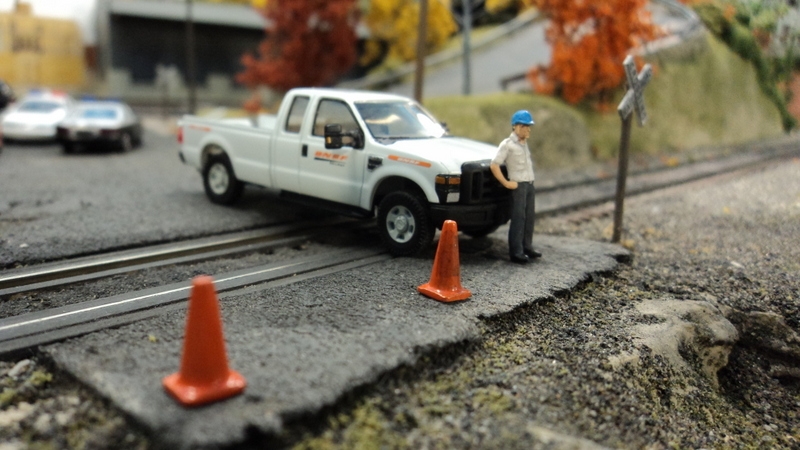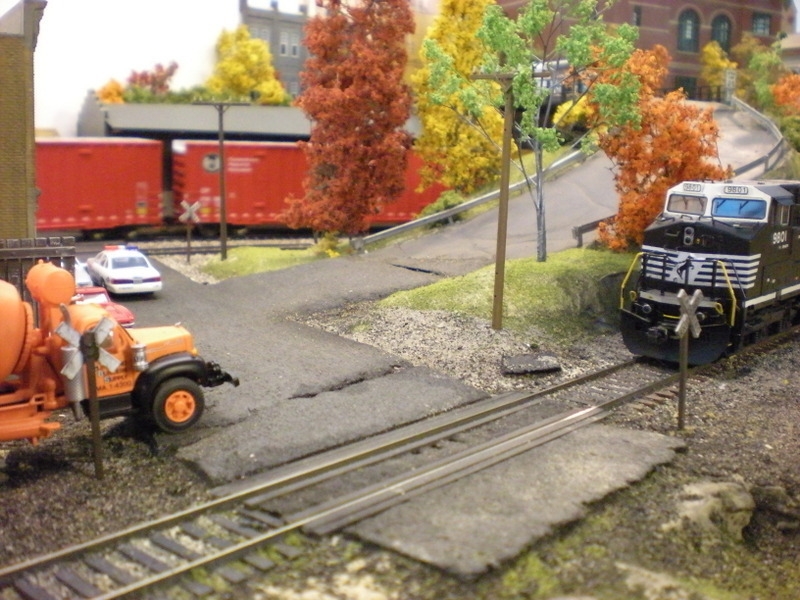Asphalt Railroad Crossings Using Black Foam Core
Here are a few shots of the best asphalt simulating material I have ever used for a grade crossing. It's all water-based, really quick, and the results are quite convincing. ** (Please pardon the primarily US railroad examples. I intend to use the same techniques on my European layout that will be my first foray into non-US modeling.)
Find some black foam core board, peel off the paper on both sides, and you have a malleable material that can be shaped, cut, sanded, press fit, and more. I use cinder ballast (or equivalent black, fine stuff) to fill in as well as real soil. White glue holds it all together.
It's easily blended into existing roadbed and track work. These applications should look convincing on my European modeling efforts. Overwash with India ink/alcohol solution and/or diluted earth and soil colors. Stain with your favorite acrylic oil, rust, and/or grime palette as desired.
If anyone has European prototype rail photos of asphalt crossings (especially SBB), I'd like to see them if you'd be willing to share. I'm assuming that the Swiss use something like asphalt or paving material for that???







Comments
These photos show another application of the foam core. The dark pieces of what looks like broken pavement or rock are pieces of weathered, shaped foam core.
You are right! That looks very convincing! I suppose that is HO scale?
Cheers!
Gordon
Rheinland-Bayern Bahn - in Spur N
It is HO Gordo, but I think it would be scale neutral in terms of look.
Looks good,
Ulrich
Very nice indeed, I love domestic layouts as much as European layouts. Both are so different and that what makes it fun.
Although it's been a number of years since I've been there, your images above reminded me of the west end of the Coleman siding on the NS line between Old Fort and Asheville. Is this perhaps more than a coincidence?
Also, your discussion of deteriorated pavement reminded me of something else in the same general area: Between Old Fort and Ridgecrest, there is an abandoned section of U.S. 70. That road was replaced by Interstate 40 -- and U.S. 70 now runs combined with I-40 in that area.
I'm note sure when that section of U.S. 70 was abandoned -- in the 1960s maybe? -- but when I saw the remains of that abandoned highway decades later, it was an amazing sight. That section, within a national forest, was slowly being reclaimed by nature. The former highway, now just a fire road -- and usually gated off -- had shrunk to a single lane of very broken pavement. So, unless efforts have been made to maintain the "fire road," the pavement may be all but gone now.
I always thought that that abandoned highway would be a great location for filming a post-apocalyptic movie. I don't think that's something you would see on a model railroad.
-- Ernest
I have always been torn between European trains an a transition era US layout, either Santa Fe or Pennsy.
Ulrich